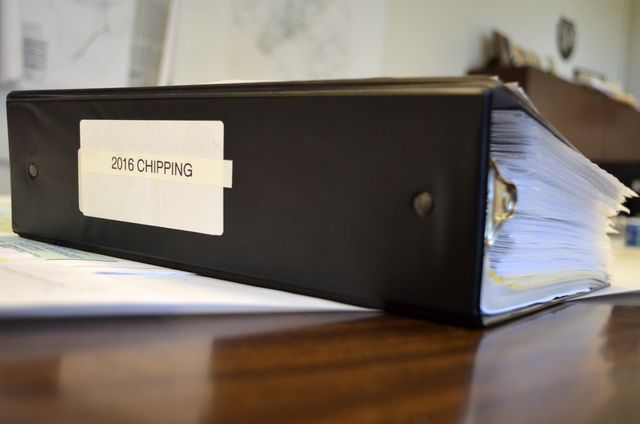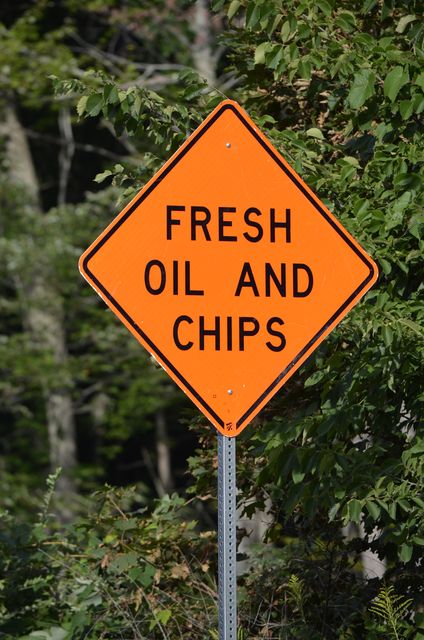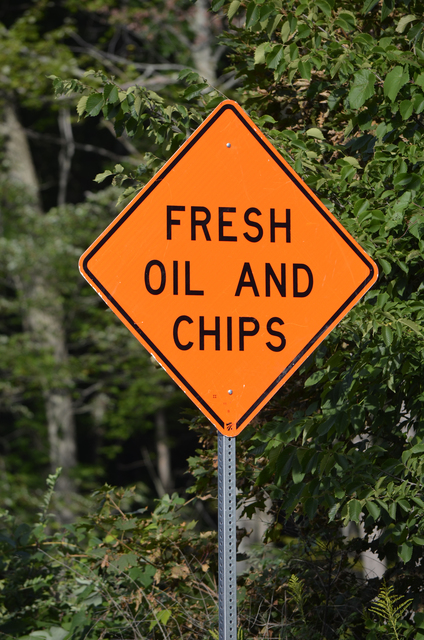CLARKS SUMMIT — Chip sealing may seem like simply dumping tons of oil and piles of rocks onto a roadway and packing it all in, but according to local PennDOT officials, where the rubber – or in this case, oil and stone – meets the road, there’s a bit more to it.
The department scheduled oil and chipping on 71 miles of roadway in Lackawanna County in 2016, with just over 34 of those miles located in the greater Abingtons area. As of Wednesday, Aug. 24, the department was completing the last step in the process on local roads – the application of a fog seal – before starting the line painting.
According to James May, district press officer, when PennDOT’s crew started the project earlier this summer, the department began receiving a lot of phone calls from residents who wondered about the purpose – especially on roads that didn’t seem to be in need of repair, while other nearby streets were in desperate disrepair. He explained the goal of the treatment is not to fix damaged roads, but to preserve them, saving money in the long term.
“Sometimes our job is to take what’s broken and fix it, and sometimes it’s to take something that’s not broken and keep it from breaking,” he said.
Cost and benefits
Chipping a road costs about $28,000 per mile, while paving runs at least $200,000 per mile.
According to County Manager David Maciak, chipping isn’t the right choice for every road, and it isn’t a solution for potholes or structural problems. But the roadways on which it is used last a lot longer than others.
“It’s a tool that we can use,” he said. “It’s like sealing your driveway. …We’re getting so much more life out of these roads, we’re actually able to pave more roads.”
The 2016 oil and chipping project in this area of the county includes sections of the following: the Morgan Highway, Oak Street (Taylor), and Newton, Ransom, Church Hill, Milwaukee, Craig, Miller, Griffin Pond, Airport, Falls, and Lily Lake roads. Also included is a Ransom Township-owned portion of Ransom Road from Rock Road to Creek Road, as part of an agility agreement between the state and municipality, in which the township provided mowing services on PennDOT-owned roadway.
Maciak said the schedule is compiled in advance, with a five-year plan, and only roads that need to be oiled and chipped are done. In general, after a roadway is paved, the goal is to chip it in three to five years. The seal then lasts about four years.
The process
Paul Manendez, assistant county manager, explained the process begins with design work and materials testing. Just any combination of oil and stone cannot be used, so both need to be tested for compatibility. Samples are taken to conclude whether the materials have a positive or negative charge. The design is then based on the volume of traffic on a given road and the stone type. Even after the physical labor begins, various testing is performed daily.
“There’s a bit of science and engineering included,” said Manendez.
About a year before the construction project is slated to begin, the department completes any any crack sealing, base repair and/or patch work that is needed on each stretch. Then, two weeks before the project starts, the crew sets up signs warning drivers of “fresh oil and chips” and “no pavement markings.”
Then the crew arrives at the site with an oil distributor, which sprays the tar on the road – generally about 3.5 gallons per square yard, followed by the chipper, which evenly spreads about 25 pounds of stone per square yard. Next comes two rubber tire rollers, which travel over the area once in one direction, to help embed the chips into the oil. After it sets and hardens, a vacuum sweeper goes over the road several times throughout the next few days.
The next step is to add a fog seal, a thin layer of emulsion that is 70 percent water and 30 percent oil, which helps lock the chips in by filling the nooks and crannies. Then the lines are painted and the job is complete.






